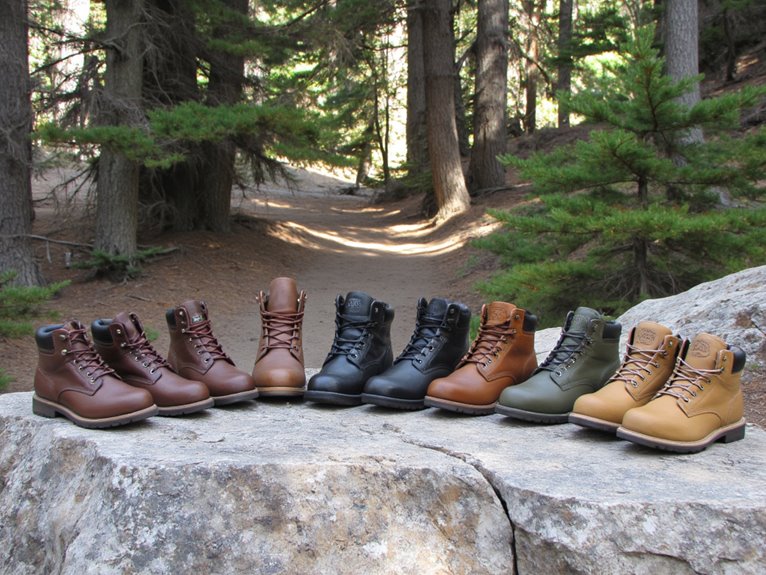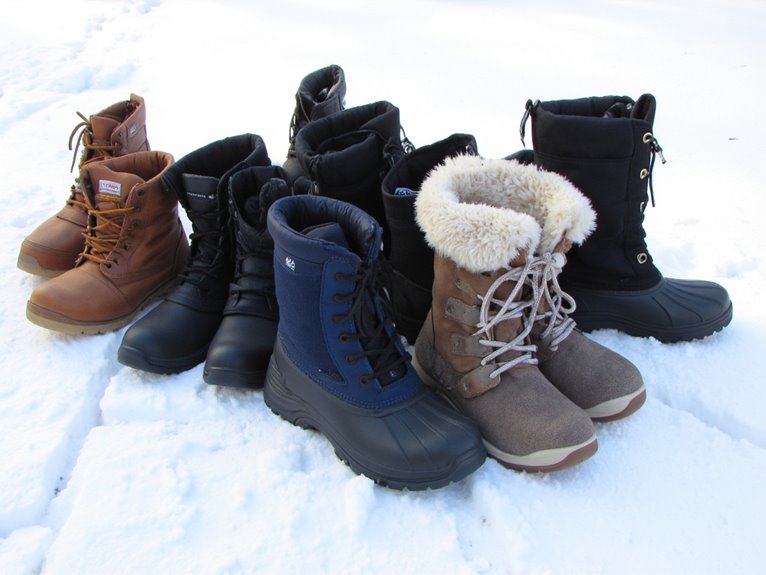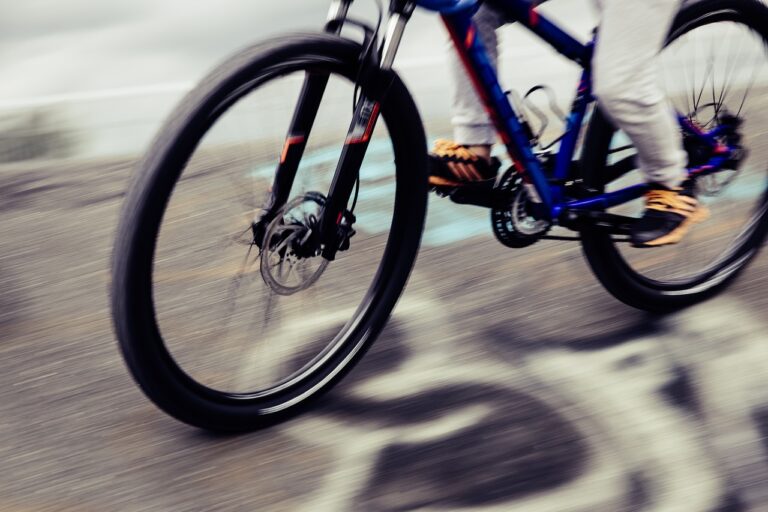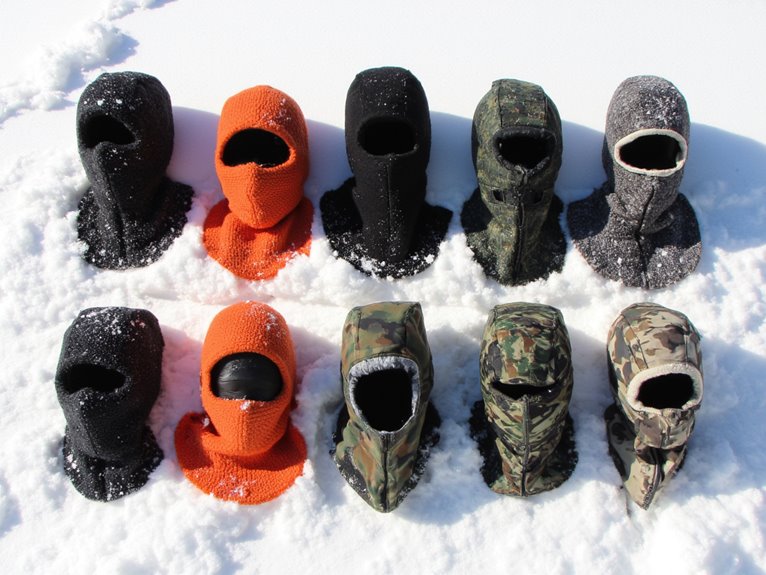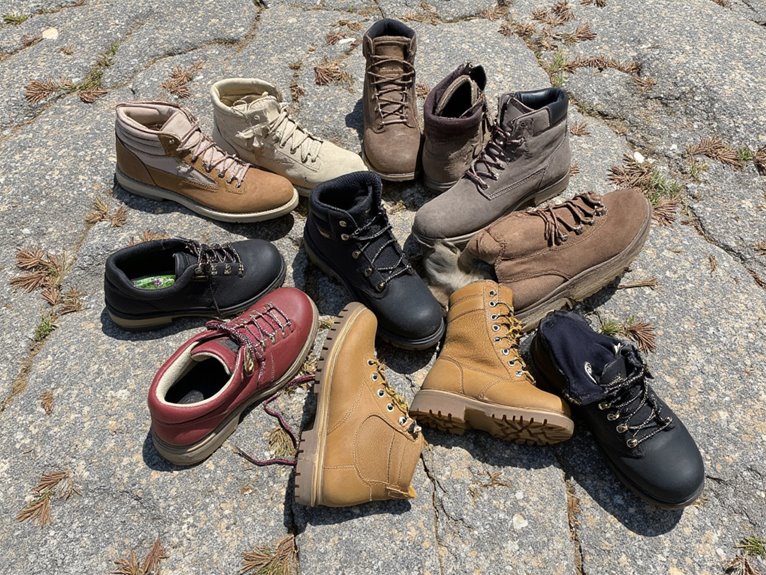Should I Be Able to Wiggle My Toes in Hiking Boots?
Adequate toe wiggle room is essential in hiking boots, as it prevents blisters, discomfort, and fatigue by allowing for a natural stride and reducing friction between the toes and the boot. Aim for about a half-inch of wiggle room to keep your toes happy and healthy. Without enough room, your toes will rebel, causing discomfort, blisters, and distraction on the trail. Get it right, and you'll be focused on the scenery, not your screaming toes. And, if you want to hike happy and blister-free, there's more to learn about finding the perfect fit…
We are supported by our audience. When you purchase through links on our site, we may earn an affiliate commission, at no extra cost for you. Learn more. Last update on 6th January 2026 / Images from Amazon Product Advertising API.
Toe Wiggle Room: Why It Matters
Freedom of toe movement is the unsung hero of hiking boot comfort, as a mere half-inch of wiggle room can be the difference between a blissful trek and a miserable, blister-ridden slog.
When your toes have room to breathe, they're less likely to rub against the boot, reducing the risk of blisters and discomfort.
Additionally, toe wiggle room allows for a more natural stride, reducing fatigue and improving overall hiking performance.
It's not about having a ton of space, just enough to let your toes relax and do their job.
With a comfortable, snug fit, you can focus on the trail ahead, not the discomfort in your boots.
What Happens Without Enough Room
Squeezing your toes into boots that are too tight can lead to a downward spiral of discomfort, as cramped toes set off a chain reaction of blisters, hotspots, and fatigue.
When your toes are confined, they can't breathe, and that's when the trouble starts.
It's like trying to run a marathon in a pair of socks that are two sizes too small – it's a recipe for disaster.
Without enough room, your toes will start to rebel, causing you to lose focus on the trail and focus on the discomfort instead.
It's a distraction you can't afford, especially on a long hike.
Blisters and Discomfort Explained
Friction, the silent saboteur of hiking harmony, is the primary culprit behind blisters and discomfort in hiking boots.
When your toes are cramped, they're more likely to rub against the boot, causing blisters and discomfort. This friction can lead to painful hotspots, especially on long hikes.
As your toes slide back and forth, the repeated rubbing causes micro-tears in the skin, leading to blisters. Ouch! It's not just about pain; blisters can also lead to infection and even force you to cut your hike short.
How to Check for Proper Fit
Properly fitted hiking boots are the foundation upon which a blister-free hiking experience is built, and it all starts with a simple yet vital step: checking the fit.
When trying on boots, wear the same type of socks you plan to hike in and verify your feet are at room temperature (cold feet can be up to a size smaller!).
Sit down, slip on the boots, and lace them up snugly. Stand up, walk around, and climb some stairs if possible.
Your toes should have enough wiggle room to, well, wiggle. If you feel any pressure points or discomfort, it's likely the boots aren't for you.
Don't be afraid to ask for help from a sales associate or try on multiple sizes – your feet will thank you.
Measuring Your Toe Spread
Now that you've got a good fit in the length department, it's time to focus on the width, where toe spread becomes a vital factor in preventing blisters and discomfort on the trail.
Measuring your toe spread is essential to guarantee you've got enough room to wiggle those toes.
To do this, try on your hiking boots with the same type of socks you plan to wear on the trail.
Stand up and spread your toes as far apart as possible.
You should be able to fit at least a finger's width between your toes and the boot's toe box.
If not, it's time to reconsider the fit.
The Impact on Ankle Support
How do you guarantee that your hiking boots provide adequate ankle support, especially on uneven terrain, without restricting your natural stride?
The answer lies in finding the sweet spot between flexibility and stability.
When your toes have enough room to wiggle, it allows for a more natural gait, reducing the risk of ankle rolls and strains.
However, if your boots are too roomy, you may sacrifice essential ankle support.
Look for boots with a snug, yet comfortable fit around the ankle collar, and a sturdy sole that provides stability on uneven ground.
Hiking Boot Materials Matter
Crafted from a diverse array of materials, hiking boots can vary greatly in respect to durability, water resistance, and breathability, making material selection a vital factor in your overall hiking experience. The right material can make all the difference between a comfortable, dry hike and a miserable, soggy one.
Full-grain leather: Durable, water-resistant, and breathable, but often heavier and less flexible.
Synthetic materials: Lightweight, affordable, and quick-drying, but may lack durability.
Waterproof membranes: Keep feet dry, but can compromise breathability.
Insulation and liners: Add warmth and comfort, but may reduce breathability.
Recycled materials: Eco-friendly options for the environmentally conscious hiker.
Lacing Techniques for a Better Fit
In terms of lacing techniques, a well-fitted hike is just a tug away.
Mastering the art of lacing can make all the difference in preventing blisters, hotspots, and a generally miserable hike.
Tightening the Upper Laces
Properly tightening the upper laces is an art that requires a delicate balance between comfort and support, as a snug fit can make all the difference between a blissful hike and a blister-ridden disaster. When done correctly, it can provide the perfect blend of stability and flexibility.
Start with a clean slate: Begin with an unlaced boot to facilitate an even distribution of tension.
Work from the bottom up: Tighten the laces in stages, moving up the boot to avoid pressure points.
Don't overdo it: Leave a little wiggle room for your toes to, well, wiggle.
Use the 'bunny ear' method: Create a loop with the laces and tuck the ends in for a secure fit.
Check and adjust: Take a few steps and readjust as needed to confirm a comfortable, supportive fit.
Even Tension Distribution
One key to achieving even tension distribution lies in mastering various lacing techniques that cater to your unique foot shape and hiking style.
The 'lace lock' method, for instance, involves creating a secure knot at the top of the boot to prevent heel slippage.
Meanwhile, the 'toe-relief' technique involves loosening the laces around the toe box to allow for a roomier fit.
By experimenting with different lacing patterns, you can achieve a snug, even fit that eliminates hotspots and blisters.
Remember, the goal is to find a balance between comfort and support – not too tight, not too loose.
With practice, you'll find the perfect lacing technique to keep your toes happy and your hiking adventures enjoyable.
Breaking In Your Boots Safely
By gradually introducing your feet to the new boots, you can mitigate the risk of blisters and discomfort, setting yourself up for a successful and enjoyable hiking experience.
Breaking in your boots safely requires patience and a gentle approach. Avoid the temptation to rush the process, as this can lead to painful consequences.
Some tips to help you break in your boots safely:
- Start with short wear sessions, gradually increasing the duration over time
- Wear the same type of socks you plan to hike in to verify a comfortable fit
- Apply moleskin or blister prevention products to high-risk areas
- Walk around your house or neighborhood to get accustomed to the new boots
- Condition your boots with waterproofing treatments to soften the leather, thereby guaranteeing a comfortable hiking experience
Finding the Perfect Balance
Finding the perfect balance in your hiking boots is essential for a comfortable and enjoyable hike.
It's all about striking a balance between having enough toe room to wiggle your toes and ensuring a snug fit that prevents blisters.
Toe Room Importance
Adequate toe room in hiking boots is like having a trusted sidekick on the trail, providing comfort and support when you need it most. It's the difference between a blissful hike and a miserable one. When your toes have enough wiggle room, you can focus on the scenery, not the discomfort in your feet.
Prevents blisters and pressure points
Reduces fatigue and discomfort
Allows for proper blood flow and circulation
Helps maintain balance and stability
Enhances overall hiking experience and enjoyment
Proper Fit Matters
In respect to hiking boots, the perfect balance of fit is like a harmonious marriage between your feet and the trail, where every step feels like a joyful compromise between support and freedom.
You want to find that sweet spot where your boots provide stability without suffocating your toes. A proper fit should allow for a snug, secure feeling without restricting your foot's natural movement.
Think of it as a gentle hug, not a constricting squeeze. When you try on boots, walk around, jump, and twist to verify they move with you, not against you.

